Issue 3 | March 2022 | Protect the Pollinators
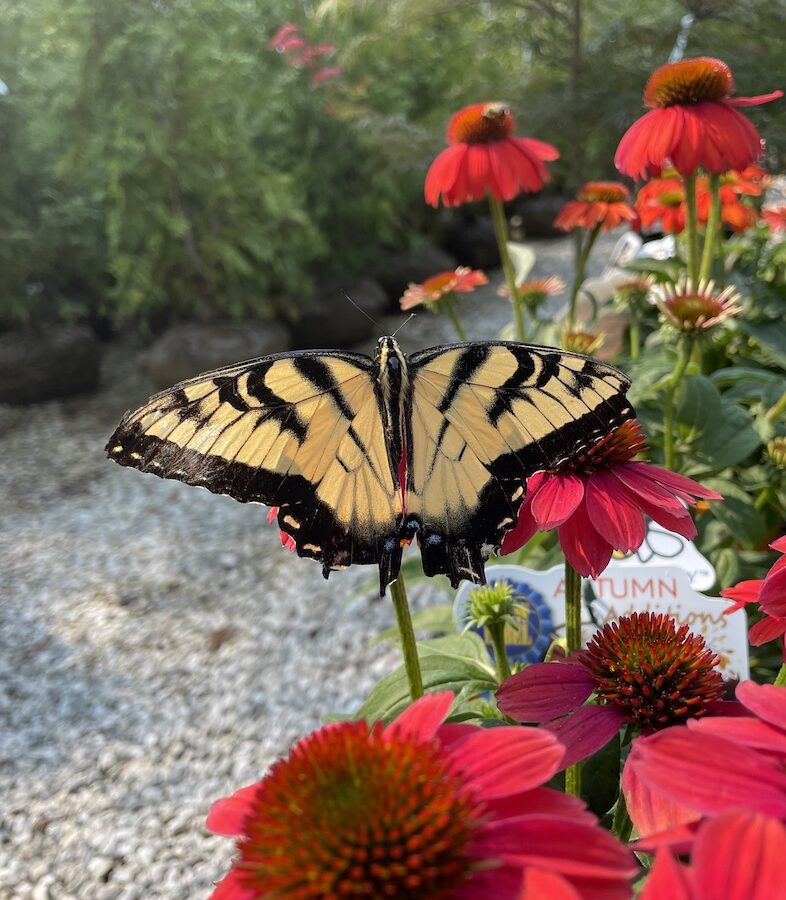
By Madeline Bartley, Garden Center Associate and Native Plant Lead, Himmel’s Landscape and Garden Center
Save the pollinators! But what are pollinators? What is pollination and why do we care? Pollination is the process that moves pollen from one flower to another of the same species, which results in genetically diverse seeds, fruits and more. The more genetically diverse plants are, the better they adapt to resist diseases, pests, and other issues.
Most flowering plants depend on our hardworking friends, the pollinators. 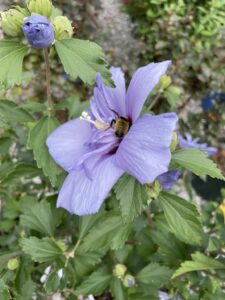 We depend on these pollinators for a lot, but most importantly to help us with our food crops (over 75% of them) – our vegetables, fruits, nuts, and beans (like chocolate and coffee). Without pollinators, there would be a lot less food to harvest and eat.
We depend on these pollinators for a lot, but most importantly to help us with our food crops (over 75% of them) – our vegetables, fruits, nuts, and beans (like chocolate and coffee). Without pollinators, there would be a lot less food to harvest and eat.
Some of these pollinators are considered keystone species. A keystone species is one that is very important to the ecosystem, and one that other species depend on. An instance of this is the bumblebee, who pollinates huckleberry flowers and much more. The resulting berries are eaten by songbirds, grizzly bears, and many more.
Who are our pollinators? You may be familiar with bees and butterflies, but our pollinator species include a great variety. Examples of pollinator species include social and solitary bees, butterflies, beetles, hummingbirds, moths, wasps, and even flies. 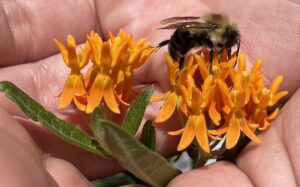 Believe it or not, bees out-pollinate all other pollinators because they feed only on flowers for their entire life. Bees only sting in self-defense, and normally avoid stinging. Social bees are the traditional European honeybee, and the iconic bumblebee. Social bees live in a hive together and have a queen bee, versus the solitary bees who do not. Of roughly 3,600 species of bees in North America, 90 percent are solitary bees. A few types of solitary bee species are sweat bees, leaf-cutter bees, and mason bees. Mason bees are a species people have been starting to keep as well as honeybees, as they are extremely important pollinators of fruit trees. Just 25 mason bees can do the same job as 10,000-25,000 honeybees.
Believe it or not, bees out-pollinate all other pollinators because they feed only on flowers for their entire life. Bees only sting in self-defense, and normally avoid stinging. Social bees are the traditional European honeybee, and the iconic bumblebee. Social bees live in a hive together and have a queen bee, versus the solitary bees who do not. Of roughly 3,600 species of bees in North America, 90 percent are solitary bees. A few types of solitary bee species are sweat bees, leaf-cutter bees, and mason bees. Mason bees are a species people have been starting to keep as well as honeybees, as they are extremely important pollinators of fruit trees. Just 25 mason bees can do the same job as 10,000-25,000 honeybees.
Butterflies pollinate a wide variety of flowers as they move around, looking for nectar and the right plant on which to lay their eggs. 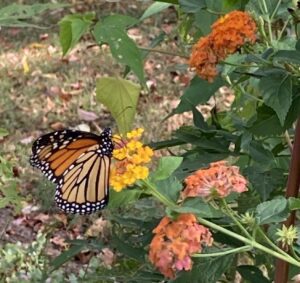 Beetle flower visitors include soldier beetles and flower beetles which feed on pollen and chew flowers. Hummingbirds focus on nectar feeding, and prove themselves as a crucial link between plant populations by visiting flowers and moving pollen great distances to increase genetic diversity. There are many species of moths, wasps, and flies that pollinate while traveling from flower to flower, looking for nectar. Flies are especially helpful due to their abundance.
Beetle flower visitors include soldier beetles and flower beetles which feed on pollen and chew flowers. Hummingbirds focus on nectar feeding, and prove themselves as a crucial link between plant populations by visiting flowers and moving pollen great distances to increase genetic diversity. There are many species of moths, wasps, and flies that pollinate while traveling from flower to flower, looking for nectar. Flies are especially helpful due to their abundance.
You may be thinking, as I did, where are all these pollinators? Looking outside, you may notice that there are not as many as there used to be. Well, they need your help! Between habitat loss and harmful pesticides (especially neonicotinoids) pollinators are in trouble. How can we help these tiny heroes? 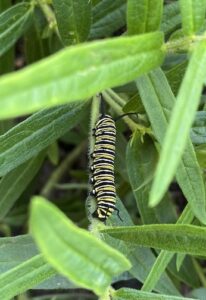 We can plant backyard gardens. Even a small garden makes a big difference! Native plants (plants adapted to the local growing season, climate, and soil) are ideal, especially for a lot of pollinators that have evolved with them over many years. Most pollinators not only feed on specific plant species, but also lay their eggs on these plants; and butterflies eat them as caterpillars. An example of this are the monarchs. The caterpillars only eat milkweed, so without milkweed they cannot have their young grow and survive; and the life cycle would stop with the adults. To help, you can make a monarch waystation/habitat.Learn more here.
We can plant backyard gardens. Even a small garden makes a big difference! Native plants (plants adapted to the local growing season, climate, and soil) are ideal, especially for a lot of pollinators that have evolved with them over many years. Most pollinators not only feed on specific plant species, but also lay their eggs on these plants; and butterflies eat them as caterpillars. An example of this are the monarchs. The caterpillars only eat milkweed, so without milkweed they cannot have their young grow and survive; and the life cycle would stop with the adults. To help, you can make a monarch waystation/habitat.Learn more here.
Many species face this issue, so keep that in mind when planting. Non-invasive non-natives that have good nectar and pollen value are also good plants for the garden. When planting, be bountiful by planting same-species clumps (for foraging efficiency), try to get species that flower across the seasons (to support more pollinators for longer), and make sure to be diverse. More species of plants means more species of pollinators. If you are not sure where to start, Himmel’s Landscape and Garden Center has a staff excited about natives and helping pollinators. Their mission statement is “helping our neighbors build a better, healthier and more beautiful world”.
There are a few other important things to keep in mind when gardening for pollinators. Many bees nest underground, so avoid heavy mulch and landscape fabric. Be messy! It is best not to do a leaf cleanup, as many caterpillars overwinter in leaves. When you get rid of the leaves, you get rid of the butterflies. Instead keep a ‘wild area’ with sticks, stumps, and leaves for safe habitat for insects. Leave trimming perennials until Spring when it has been consistently 50 degrees or more. Be chemical free, and cautious of what you do use. Only use treatments when needed as consistent preventative treatments become ineffective over time. Learn more here .
Most of all, be friendly to pollinators and help others to learn about pollinators and native plants. For additional reading:
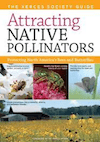
Click here to find Native plants for Maryland.

